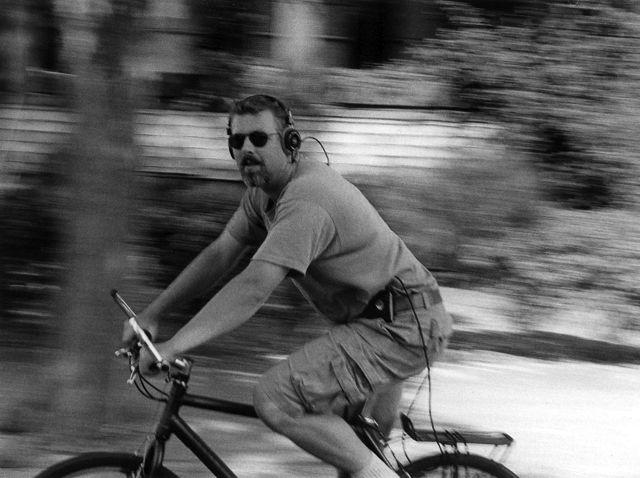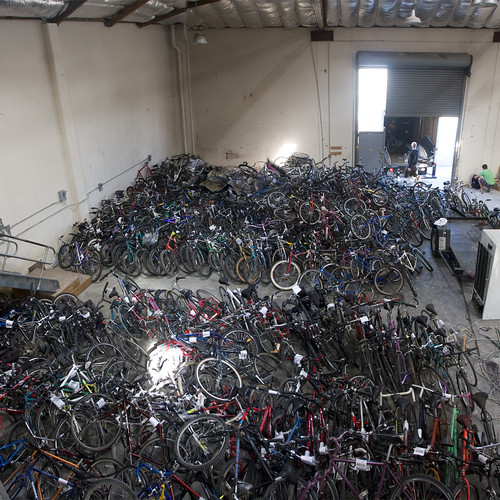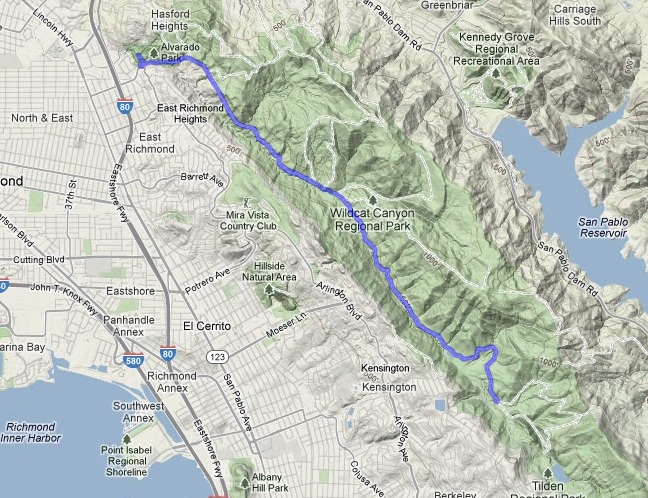For the last 12 years, I’ve been riding this 1996 Gary Fisher Kaitai – a bike I bought from my editor during the BeOS Bible project. We’ve been through thick and thin together: A lot of rain and mud, a bunch of repairs, and countless daily commutes from El Cerrito to UC Berkeley and back. But despite the fact that my body and this bike are virtually united, I’ve been hankering lately for a new ride — something actually fitted for my body.

But every time I get on that bike, I feel guilty for even contemplating giving it up. There’s nothing wrong with it. I have a relationship with this bike. Just a few days ago, finally decided to keep riding it until it wore out.
Today, riding a few miles along the Bay Trail with friends and family, coming down off one of the amateur wheelies I like to pop from time to time, I heard a loud cracking sound. Suddenly, the handlebars didn’t turn the front wheel anymore. Uh oh. Got it home and opened up the top tube to find the handlebar stem badly cracked. Took off to find a replacement stem at local bike shops.
It was then I was reminded why standards matter and proprietary variants suck. For a couple of years, Gary Fisher had experimented with a non-standard stem size of 1 1/4″, rather than the typical 1 1/8″ or 1 1/2″. One shop after another gave me the same bad news: “I’ve never seen a stem that size.” “Good luck finding a replacement.” “I doubt even the Gary Fisher company themselves have them in stock.”
Was beginning to contemplate an internet hunt, when the sales manager told me about Mike’s Bikes Africa Bike Drive, which takes tired old Bay Area bikes and sends them to Namibia, where mechanics piece them back together and give them to Africans in need of reliable, inexpensive, eco-friendly transportation.
A remote village in Namibia is the location of our new Sister Shop, a place where there is little access to telephones, much less bicycles. Erasmus and Ludwig are our point-men on the ground along with Peace Corps Volunteer Kami. They are thrilled to have an opportunity to bring a better life to their community through the power of the bicycle, which is our philosophy exactly. With your help and generosity, it’s going to be a beautiful partnership.
Tax-wise, it worked out pretty well. We estimated that the tax savings would approach what I would have made by selling the bike on craigslist — after going through the twin hassles of fixing the stem and finding a buyer. Decided then and there to let the old Kaitai go. In a few weeks, it’ll hopefully have a new home with a person in Namibia who needs it more than I do.
And, of course, this was exactly the sign I’d been waiting for that it’s finally time to go bike hunting. The Renovo Panda makes my heart skip a beat, but eyes and ears are wide open to other options. Got a favorite commuter bike to recommend?

Unloading the shipment from last year’s Africa Bike Drive.







